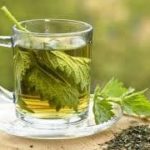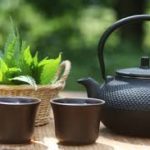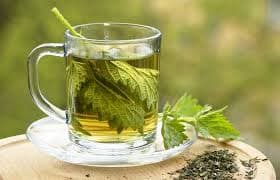 The botanical name of our common nettle is Urtica Diocese and despite being mistakenly considered as weed and eliminated from the fields, it is a plant of a thousand virtues beneficial to our health.
The botanical name of our common nettle is Urtica Diocese and despite being mistakenly considered as weed and eliminated from the fields, it is a plant of a thousand virtues beneficial to our health.
Healthy and luminous skin – herbal tea with leaves and poultice
If you want to cleanse yourself, refresh your inflamed body, stimulate metabolism and the hematopoiesis (natural blood cell production), you could prepare a herbal tea with nettle leaves.
Two cups a day will make you feel reborn, as this herbal tea works on the blood. As the days go by, you will discover that you also have a brighter, more elastic skin: pimples disappear, the dermatitis improves and stains weaken.
To make the herbal tea it is enough to heat the water and when it is boiling pour it on the leaves. For 1 cup of 250 ml you need 1 tablespoon of nettle, equal to 15 grams.Leave it in infusion for 12-15 minutes.
For eczema and psoriasis you can prepare poultices with the nettle leaves to apply on the affected areas and you’ll discover how the skin improves!
Healthy hair and scalp – plant decoction
With the whole plant, i.e. leaves, stems and roots, you could prepare a decoction of nettle and with this rub the fat scalp or the scalp with dandruff or affected with hair fall
Draining action – root decoction
If, on the other hand, you want a more draining action I recommend preparing a decoction with the root of the nettle instead of the leaves. Boil ½ tablespoons of nettle root for 10 minutes in 300 ml of water. Filter and drink as herbal tea, at least 2 cups a day.
Other phytotherapeutic properties
You can also find the nettle, expertly mixed with other plants, so to have a more powerful and synergistic action in the various areas where it can act, for example:
- the draining Herbal Tea Shotha Virya®
- in the Meha Virya® tablets that balance the kidneys
- the gynecological apparatus Nari Virya®
- in the heart with Sadaka Virya®
- In the Pavana Virya® purifying tea
- For draining in the Vata Samya Virya® tea;
- in the disinfecting Tejas Virya® and in shampoo of only powder of plants Utsadanam Virya®
A bit of history of the nettle
Pliny the Elder, born in Como or Verona (the exact birthplace is not known), lived from 23 to 79 AD, and was a great Roman naturalist as well as a writer and admiral. He wrote the ‘magna’ work Naturalis Historia consisting of 37 books, which was the fundamental reference for the technical and scientific knowledge up to the Renaissance and beyond.
In the book XXII par. 31-36 Pliny lists the properties of nettle and its uses in Roman times:
- antidote for poison of plants and animals
- fungicide
- gynaecological disorders
- sores
- respiratory difficulties
- arthritis and gout
- digestive problems and constipation
- hair growth
- etc…
While Castor Durante in his “New Herbarium” (1585 AD), sustained: “It is so very famous that the n ettle is known to everyone until in the dark night” and he listed many of his “virtues for the inside” and ” Virtue for the outside “.
ettle is known to everyone until in the dark night” and he listed many of his “virtues for the inside” and ” Virtue for the outside “.
In fact, these virtues have been confirmed by today’s scientific researches, which have also established the most important active ingredients: urticoside, chlorophyll, xanthophylline, secretin, tannins and mineral salts. In addition, the irritant fluid of the plant hairs contains histamine and acetylcholine.


